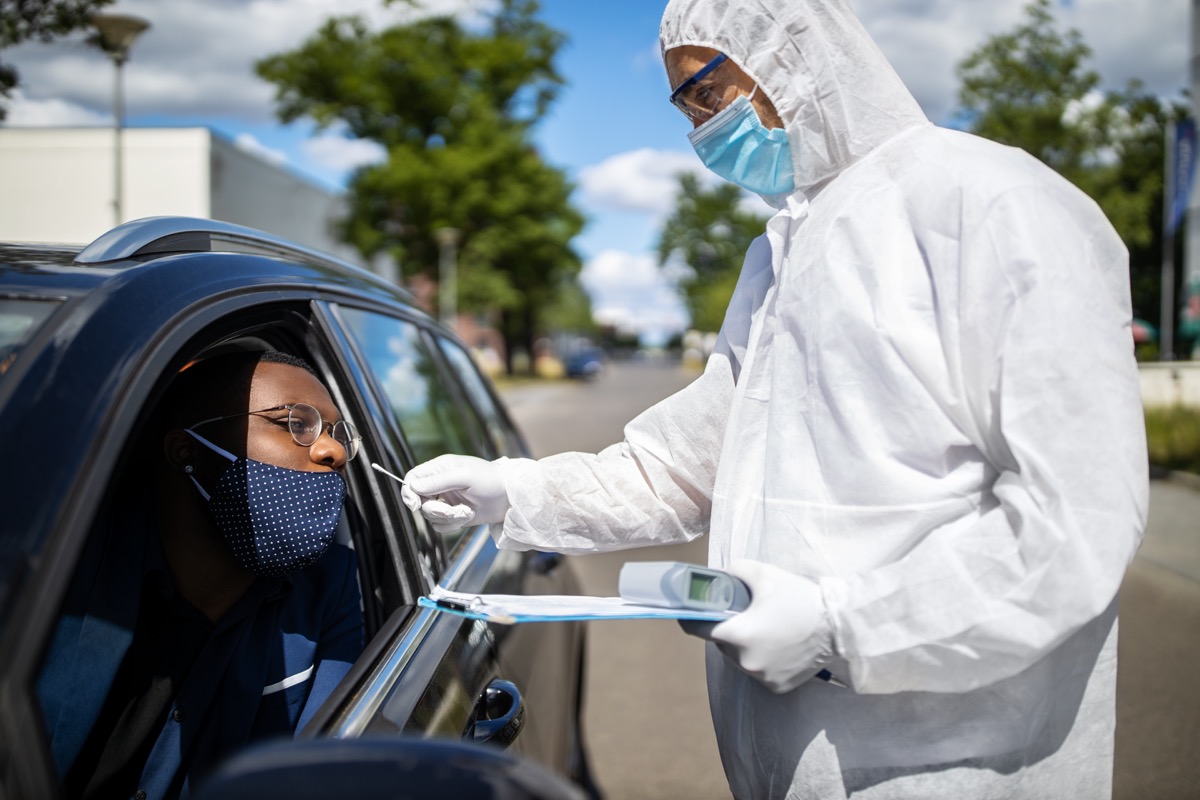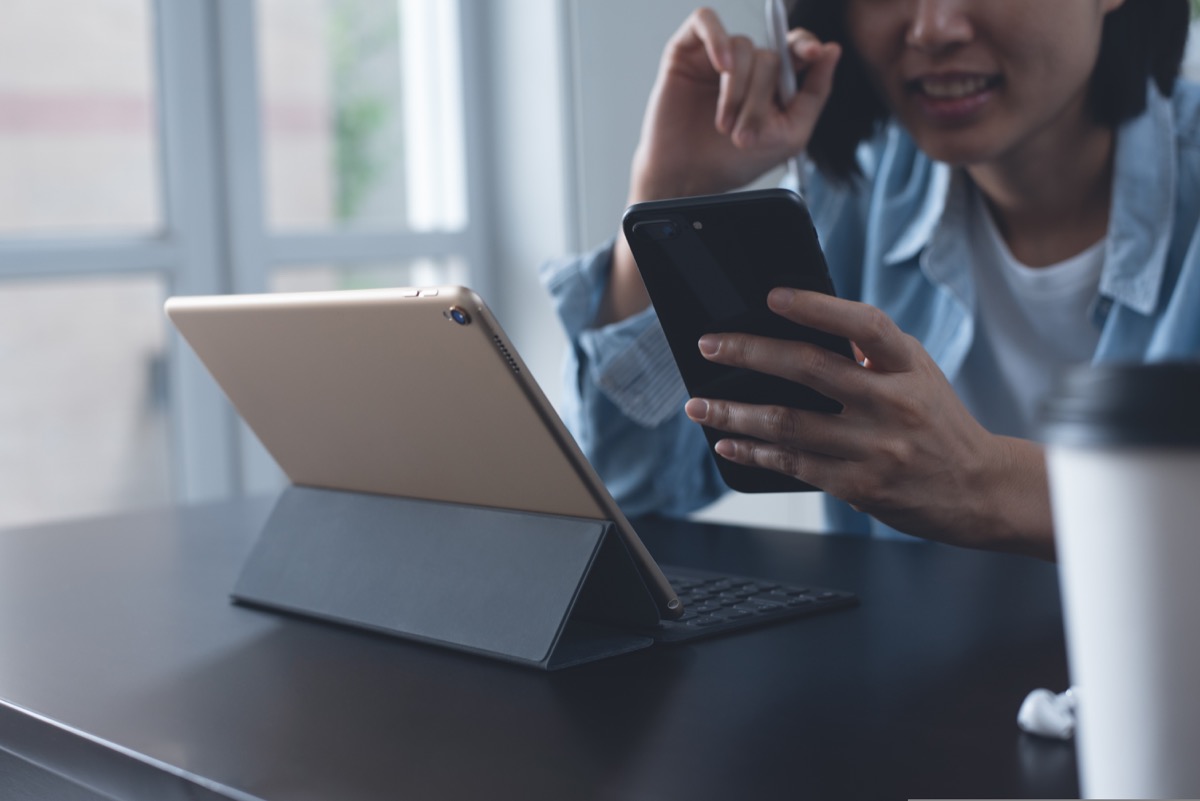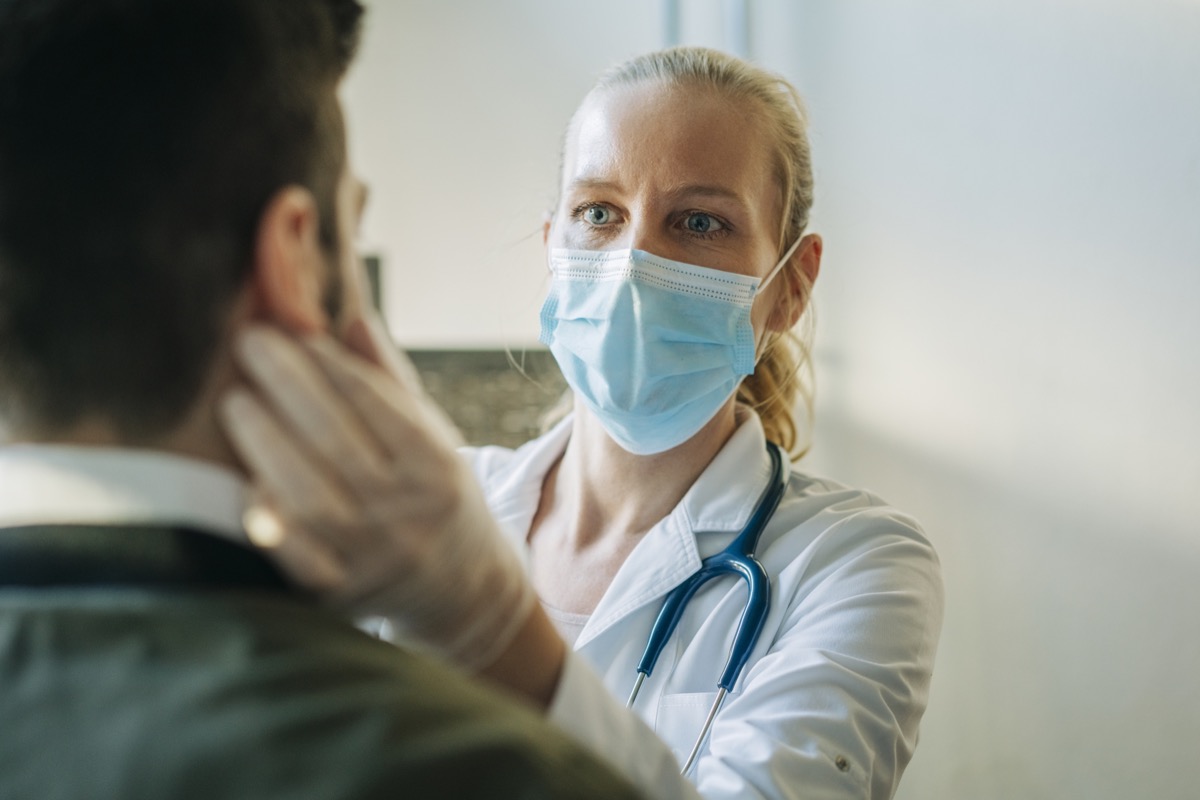A negative COVID test before heading home can’t guarantee that you’ll be COVID-free when you see everyone. The New York Times points out that “false negatives are common with coronavirus testing—whether it’s a laboratory PCR test or a rapid antigen test—because it takes time for the virus to build up to detectable levels in your body.” Additionally, you could pick up the virus after you had the test—while grocery shopping or even filling up your gas tank. If you’re traveling via plane or bus to your destination, you could also pick up the virus in transit. “I don’t want somebody to have a negative test and think they can go visit grandma,” Ashish Jha, MD, dean of Brown University’s School of Public Health, told The New York Times. Although experts are pleading with people to stay home this holiday season, they know some Americans will travel regardless. And for those that feel they must travel, getting a test is a good added precaution, even if it’s not foolproof. A test “filters out those who are positive and definitely shouldn’t be there,” Esther Choo, MD, an emergency medicine physician, told The New York Times. “Testing negative basically changes nothing about behavior. It still means wear a mask, distance, avoid indoors if you can.” A negative test will not guarantee that it’s safe for you to be around others—but it will decrease the likelihood that you’ll bring more than gifts home for the holidays. The Centers for Disease Control and Prevention’s (CDC) holiday guidance reminds everyone that “testing does not eliminate all risk.” However, it notes that testing can make travel less dangerous if it is combined with other precautions like social distancing, self-quarantining, and wearing a mask. If you’re planning to get tested for COVID, read on for tips on the safest and most accurate way to get it done. And for more essential guidance on holiday gatherings, This Is the Only Way You Can Have a “Safe Christmas Party,” Doctor Says. Although antigen tests are much quicker, PCR tests are significantly more accurate. PCR tests check for COVID “by detecting genetic material from SARS-CoV-2, the virus that causes COVID-19, in the nose and upper throat,” per MIT Medical. A PCR test can be taken at urgent care centers, walk-in clinics, hospitals, and drive-thru testing centers. And for tests to avoid, If You’re Asymptomatic, This COVID Test Could Fail You. It may take a while to get your PCR test results back: Many testing centers say the wait time for results is about five to 10 days. The New York Times suggests that if you’re getting a PCR test, you should check the specific turnaround time at the testing site you’re going to, and then aim to schedule your test as close to your travel date as possible. It may be wise to leave a cushion of a day or two to account for the rush of people getting tested before the holidays, and as a result of the current surge. And for more up-to-date information, sign up for our daily newsletter. To lower your chances of picking up COVID after your test and before seeing your family, it’s best not to leave your home post-test, barring an emergency. And for more on stopping the spread of coronavirus, Dr. Fauci Says You Need to Do This One Thing to Stop COVID.ae0fcc31ae342fd3a1346ebb1f342fcb The CDC advised that people who decide to travel should get tested for COVID twice. Per their advice, if you travel, you should get a COVID test one to three days before traveling and then get tested again three to five days after you return home after the holidays. And for more on the current state of the pandemic, These States Aren’t Doing Enough to Fight COVID, White House Warns.



